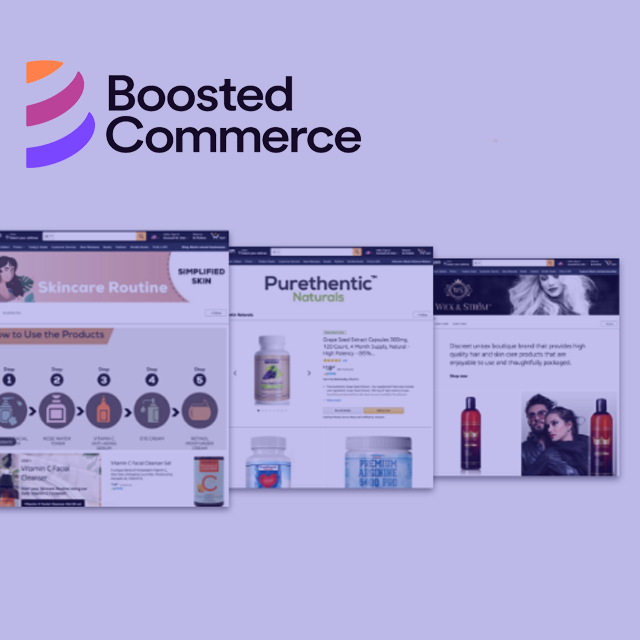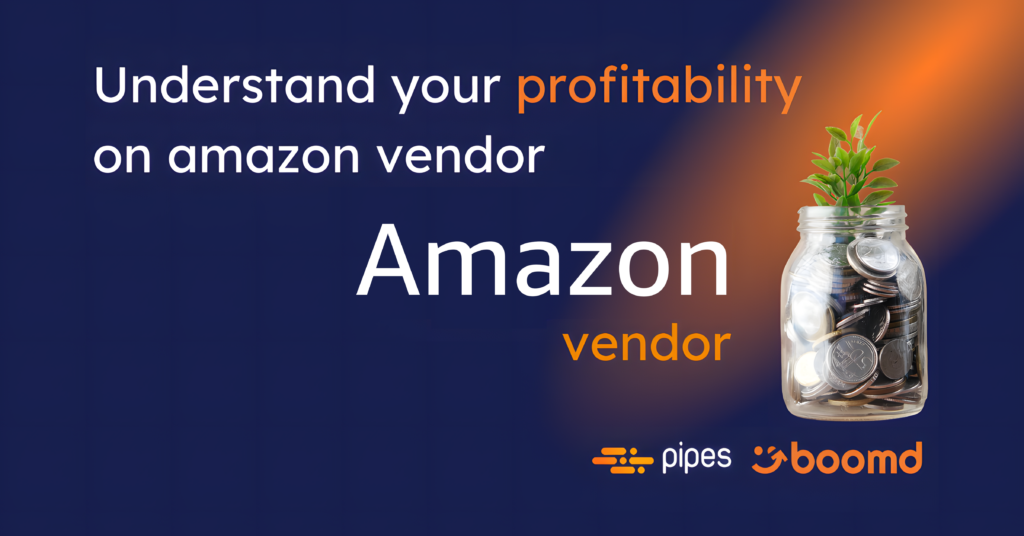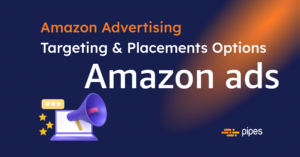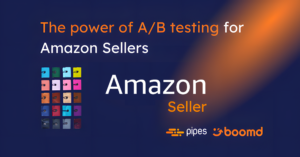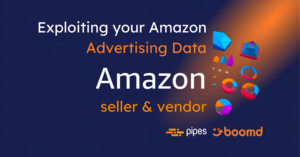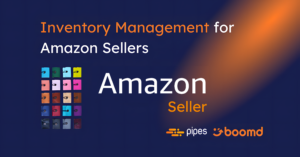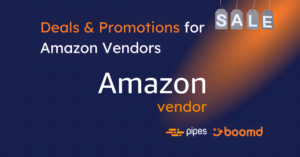Do you know your profitability on Amazon Vendor?
As a professional Amazon Vendor, you’ll know just how difficult it can be to pull all of your data together in one place. As your relationship with Amazon grows, you’ll likely sell to more marketplaces, bringing added complexity. Calculating your Amazon Vendor profitability, accounting for your product costs and Amazon’s terms and charges, across multiple marketplaces, is not straightforward.
Amazon doesn’t provide a simple way to show all your vendor marketplace data in one place, so you’ll need some form of integration or reporting tool to avoid the dreaded multiple Excel and CSV downloads!
The simplest questions can therefore be the most difficult to answer! If you struggle to answer any of these, this article may help you determine how best to proceed!
- Can you calculate your overall profitability on the Amazon Vendor Platform, globally, down to SKU level?
- What is your most profitable Amazon marketplace, after taking all costs into account, and is this profitability seasonal?
- How much profit has been lost due to uncontested chargebacks?
Visualising Amazon Vendor profitability
Let’s begin by summarising the broad areas to consider, to help visualise how you might think about the profitability of your B2B relationship with Amazon.
Missing out on any of these areas could have a significant impact on your overall profitability.
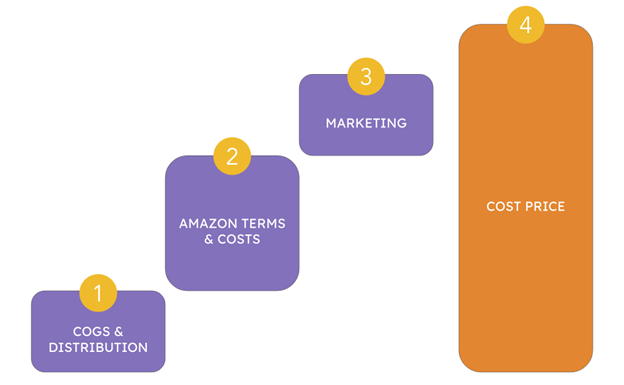
Amazon cogs and distribution
Before a single product ships to Amazon, or ideally before terms are agreed, you’ll know exactly what a single item of each SKU costs you, and what the landed cost will be at Amazon’s fulfilment centre.
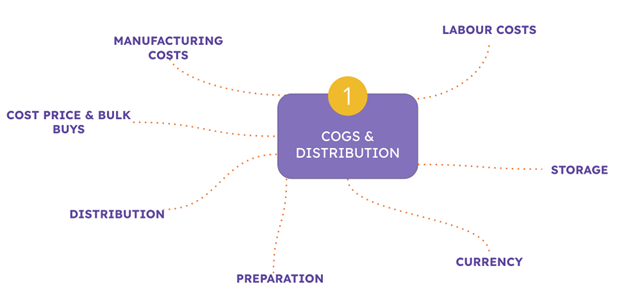
Uncertainty on energy costs, supply chain disruptions, inflation, wider currency fluctuations, distribution costs and increased storage cost have all hit at once. What previously might have worked, might not be profitable now, so it’s wise to review any assumptions made on a regular basis.
Be sure to include all the preparation, packaging, wrapping and labeling. Take account of Amazon’s Minimum Order Quantity (MOQ) per product so you’re not caught out with less efficient shipping fees or repacking.
All of this lets you set a Cost Price with more confidence, but you need to factor in the other costs of the B2B relationship with Amazon. Unlike some other channels to market you may have, once products leave your warehouse, you still have a responsibility in this relationship to help sell them.
Amazon terms and costs
As a vendor, you’ll have agreed specific terms with Amazon. These set out how the B2B relationship will work, but most importantly, it’ll show the specific funding arrangements.
Examples include damage allowances, freight allowance, subscribe and save, co-op activity funding and AVS.
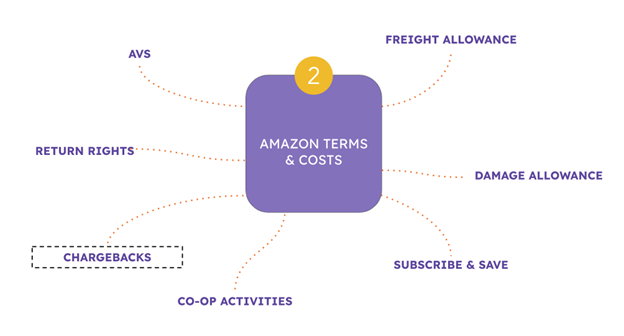
In terms of profitability, you’ll need to ensure that all of these are factored into your calculations. You may have inherited the agreement, but not be fully aware of all the terms. Attention to detail here is critical!
Some costs are based on a percentage of net receipts. Others, such as damage allowance, are calculated as a percentage of average return rates and disposal costs per sector (or you pay for return of the damaged stock).
Co-op activities include automated marketing and marketing development funds, covering search recommendations, helping to create the environment for your success on Amazon, and bringing in potential customers. A common misunderstanding is that co-op costs also cover advertising of own-products, when in reality this is an additional cost requirement.
These contractual costs can all add up to something quite significant, and will have a big impact on profitability if not accounted for.
Amazon chargebacks
Let’s think about this from Amazon’s perspective. Amazon wants to delight its customers. They do that by having ultra-refined processes and procedures, and automation underpinning their platform and their service.
It has to operate like a beautifully orchestrated, well oiled machine, otherwise things happen out of order, require manual intervention, or rework. What does that mean? Additional cost!
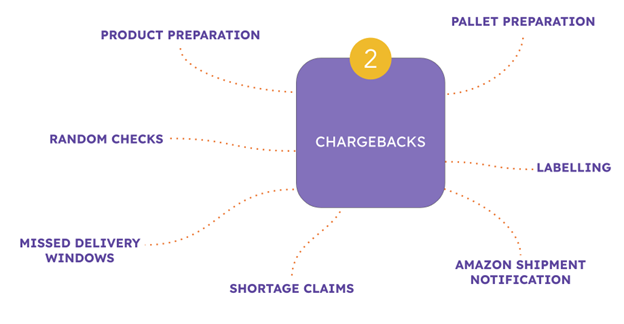
If you, as the vendor, are responsible for these issues, or Amazon believes that you are, then these costs will be passed on to you, in the form of chargebacks. Each additional cost, although possibly small individually, will add up quickly, and of course, impact your profitability.
The key principles regarding chargebacks are to be vigilant, act quickly, provide as much information as you possibly can when challenging them, and most importantly – learn from your mistakes, and don’t repeat them.
Amazon Vendor marketing
As we mentioned, it’s primarily the vendors responsibility to create the demand for the products you ship to Amazon.
Think of it like a big pipeline – you’re putting your products into one end (Amazon’s fulfilment centre), and customers buy them at the other, in the Amazon store. If you don’t have enough customers buying, the stock remains in Amazon storage, and the pipeline fills up.
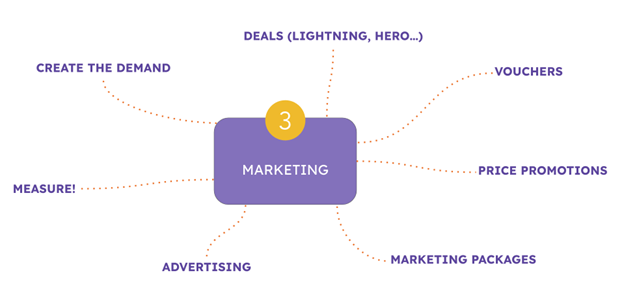
Amazon is tracking weeks on cover per SKU. If the sales velocity is low, your orders are going to dry up. Worst case, if Amazon has return rights, the stock will be sent back. An unwelcome surprise!
This is not a marketing and advertising specific article, but it’s important to take into account all of these costs, so you can calculate profitability accurately.
The key here is to MEASURE! Track profitability by SKU, product group, marketing mechanism and Amazon marketplace.
Amazon Vendor profitability summary
We hope this high level summary of vendor profitability aligns with the view of profitability within your business and gives you further areas to explore to ensure you’re capturing all the key areas to avoid unwelcome surprises.
Once you’ve got this level of granularity, the questions we posed at the beginning become much easier to answer.
In this process, access to your Amazon data is a central part of your overall profitability calculations. With the data connectors of our Pipes solution, you have easy access to your current Vendor sales data and advertising costs at any time.
About Boomd
A full-service Amazon agency, with a team of Amazon Vendor and Seller experts, helping brands, manufacturers and distributors sell profitably on all Amazon marketplaces worldwide. Boomd can support you with all aspects of Amazon Vendor, Amazon Seller and Advertising on Amazon, and pays particular attention to helping you sell profitably.
Title: Amazon Vendor profitability
Series: Amazon Vendor
Author: Nick Turner, Co-Founder, Boomd Amazon Agency
Date: December 2022
